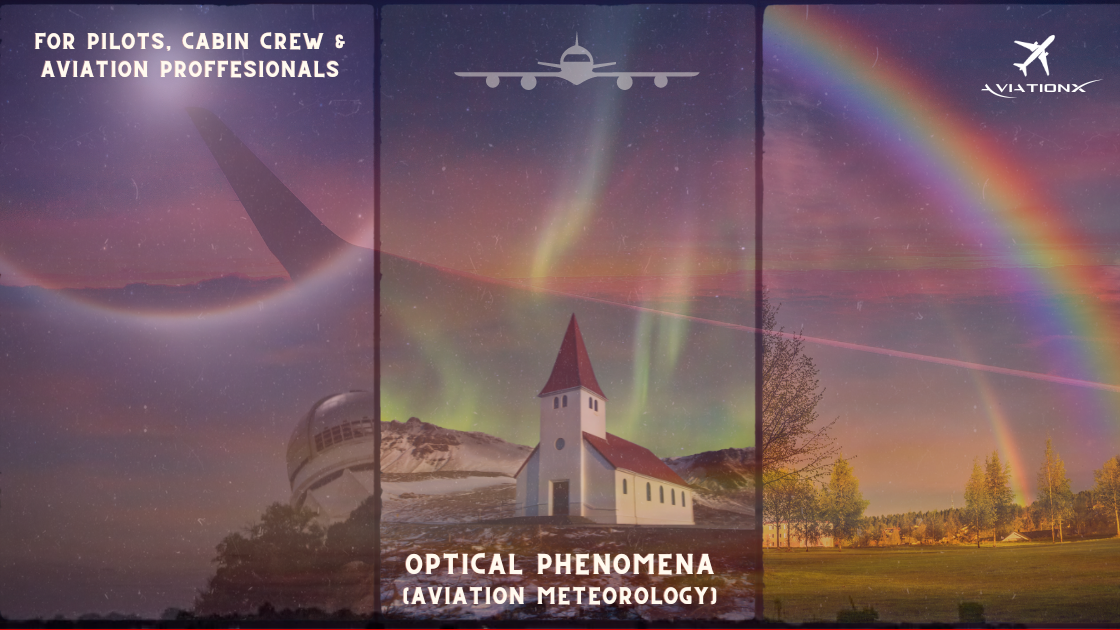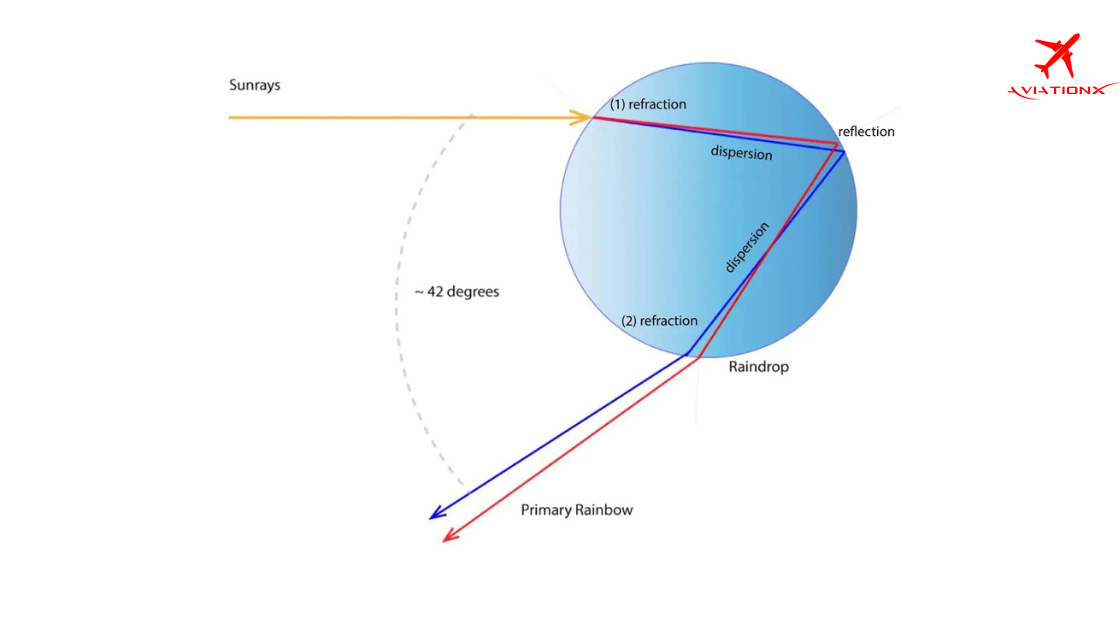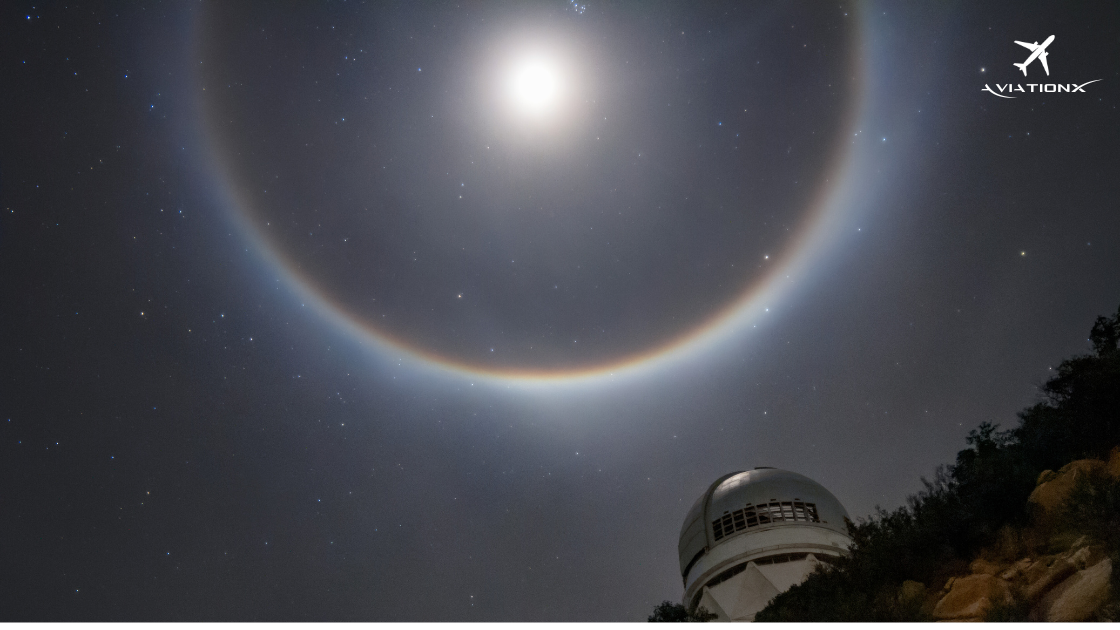Decoding Aviation Meteorology: Understanding Optical Phenomena

In this blog post on the Aviation Meteorology Series, we will be discussing in detail about Understanding Optical Phenomena. This is a must-read for all practising and aspiring pilots, cabin crew and all aviation professionals. and a very interesting read for all aviation professionals. We recommend reading the entire blog for comprehensive learning.
Experienced aviation professionals can attempt a short quiz directly on Understanding Optical Phenomena to check their knowledge. Click the button below or the icon on the right-side tab to start the quiz.
Delving into the fascinating world of atmospheric phenomena, our blog sheds light on optical occurrences crucial for aviation safety and understanding.
From the intricate mechanics of rainbows, halos, and coronas to the intriguing mirages and enigmatic auroras, each phenomenon holds valuable insights into cloud composition, atmospheric turbulence, and ice accretion.
Dive into our discussions to uncover the secrets behind these phenomena, providing you with essential knowledge for navigating the skies with confidence and clarity.
Several optical phenomena frequently occur in the atmosphere, providing valuable insights into cloud composition, atmospheric turbulence, lapse rate, ice accretion, and more, all of which are crucial for aviation. Some of these phenomena are briefly discussed below.
Rainbow

A rainbow is a series of concentric arcs displaying colors ranging from violet to red. It is formed against a backdrop of water droplets in the atmosphere, whether from raindrops, drizzle, or fog, illuminated by sunlight or moonlight.
Occasionally, two rainbows are observed simultaneously: the Primary and the Secondary rainbows. The primary rainbow, seen opposite to the sun or moon, forms a circle or arc with colored light in the sky during rainfall.
This circle subtends an angle of 42° at the eyes and may appear as a complete ring from elevated viewpoints like hills, towers, or aircraft.

Halo

A halo is a luminous circle around the sun or moon, formed by the refraction of light through ice crystals present in Cirrostratus (CS) clouds.
The most common halo, known as the Small Halo, is a predominantly white luminous ring with a radius of 22° and the sun or moon at its center.
When well-developed, the halo may display a clear red outer edge, signalling the presence of ice crystals and indicating minimal chances of ice accretion. A less frequent phenomenon is the Large Halo, a circular halo with a radius of 46°, which is dimmer than the Small Halo.
To access the entire blog, subscribe to our premium plans today and get one step closer to your Aviation Dreams Get AviationX Plus or AviationX Pro today for all things Aviation.
Limited time Super offer on AviationX Plus Membership (50% Forever discount)